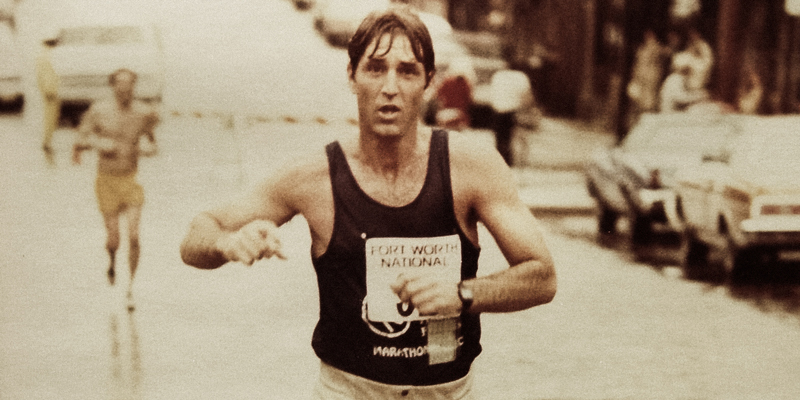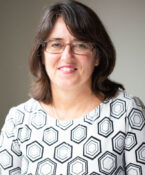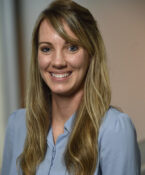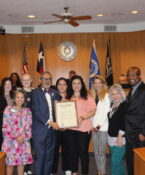Cowtown co-founder looks at four decades of running success
By Jan Jarvis

The weather was in the 70s on that February evening in 1979 when some 1,000 runners picked up their packets for the first Fort Worth Cowtown Marathon.
“An hour after the last packet was given out, a blue norther blew in and the streets were turned to white,” said Dr. Robert Kaman, Cowtown co-founder and Professor Emeritus at UNT Health Science Center.
The race course, which volunteers had marked earlier that day, was fast disappearing when Paul Isham, a City of Fort Worth attorney and runner, came to the rescue.
“In the middle of the night, he ran from one store to another until he got enough spray paint to mark the course on the ice,” Dr. Kaman said. “We were ready when the runners started showing up at 7 the next morning. “
Some 210 runners ran in the marathon and 250 in the 10K.
“Even though we had terrible weather, we thought the event was a success,” Dr. Kaman said.
This weekend, the action continues when some 28,000 runners from Texas and beyond are expected to hit the streets for everything from a 5K to a full marathon.

Over the last four decades, weather has been a frequent challenge for the Cowtown.
“We had years where the wind was so strong our banners blew away,” Dr. Kaman said. “It seemed that the wind always came from the north, and the runners ran against it.”
Only once in its 40-year history has the event been cancelled. In 2015, icy streets force the cancellation of most events. The half marathon was an hour late on that Sunday.
Dr. Kaman never could have imagined back in 1978, when the idea was introduced, that the Cowtown Marathon would become the national event it is today.
It began at a time when running was catching on. The Institute for Human Fitness and Texas College of Osteopathic Medicine were quick to create and sponsor the local run. Others would step in to help, including the Fort Worth Star Telegram and Miller Brewery.
“When we were able to provide free beer at the end of the run, things took off,” Dr. Kaman said.
The first race started in the Northside, but it would be moved two more times in the years ahead.
“Eventually, we had to make the painful decision to move the run to downtown Fort Worth,” Dr. Kaman said. “The streets were just too narrow to hold all the runners.”
Downtown was not without its challenges. Once it rained so hard that the tents where runners picked up their packets had two inches of water on floor.
Another time, the police officer driving the lead car for the 5K race got lost.
“He knew exactly where to go,” Dr. Kaman said. “But he made a wrong turn and the 5K literally became a 1.5K.”
When the race got too big for downtown, the decision was made to move again.
“We always wanted to move to Will Rogers,” Dr. Kaman said. “It seemed so obvious that we should be right by UNT Health Science Center.”
But Will Rogers was reluctant to allow a one-day event on Sunday because they were worried that the runners would collide with church traffic.
“It was just another obstacle to overcome, but we did,” Dr. Kaman said.
The course was altered, and the event was expanded over two days.
Although the event has always been considered successful, it never made money until recently.
“For 35 years, our sponsors made up the difference in expenses,” Dr. Kaman said. “Without our sponsors, we couldn’t have survived.”
In the last five years, revenues have exceeded expenses.
“Now we’re approaching a $2 million enterprise,” Dr. Kaman said. “Our 5K for kids is the largest children’s running event in the nation.”
Dr. Kaman is pleased with how things turned out.
“I’m so proud of the UNT Health Science Center for always being a primary sponsor for this event.” he said. “It has been such an effective way to show the community we are a source for health and fitness.”




Social media